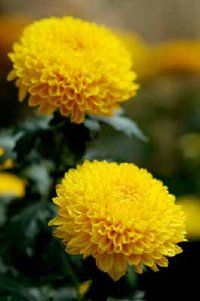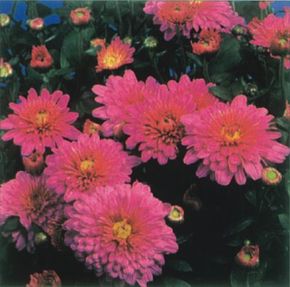Two species of the multitudinous chrysanthemum clan are especially popular with gardeners as flowering summer annuals. One bears small, perky, yellow blossoms and the other has white, daisylike flowers.
Description of chrysanthemum: C. paludosum grows about 10 inches in height and has a mounding, trailing habit that spreads to 15 inches. The single, small, white flowers are borne profusely all over the plant. C. multicaule is slightly more vigorous, growing to 12 inches with a 20-inch spread. Flowers are single yellow daisies and are visible from a distance. Both will bloom all summer, but if bloom diminishes, shear back by half to encourage new growth and flowering.
Advertisement
Growing chrysanthemum: Grow in rich, well-drained soil in full sun if roots can be kept cool and shaded by other plants; otherwise, in partial sun. An eastern exposure would be ideal for both. Incorporate a slow-release fertilizer in the soil before planting. Plant after the last frost date when the soil has warmed. Space 8 to 12 inches apart for solid coverage.
Propagating chrysanthemum: By seed or by cuttings. Germination is 14 to 21 days at 60 to 65 degrees Fahrenheit. Sow 6 to 8 weeks prior to transplanting to the garden. Plants will bloom approximately 10 weeks after sowing. Cuttings root quickly and easily.
Uses for chrysanthemum: Plant in rock gardens, on slopes, and in the front of beds or borders. Use at gates, along pathways, and at doorsteps where a colorful ground cover is desired. The trailing quality adds grace to hanging baskets, window boxes, and other containers. The white of C. paludosum is a good choice in mixed plantings, cooling down hot colors and intensifying dark ones.
Chrysanthemum related varieties: White Buttons is the most commonly grown selection of C. paludosum. Yellow Buttons is the most popular selection of C. multicaule.
Scientific name of chrysanthemum: Chrysanthemum paludosum, multicaule
Chrysanthemum can also be enjoyed as an indoor plant, although as such it is only temporary. Go to the next page to learn about chrysanthemum as a house plant.
Want more gardening information? Try:
Advertisement

